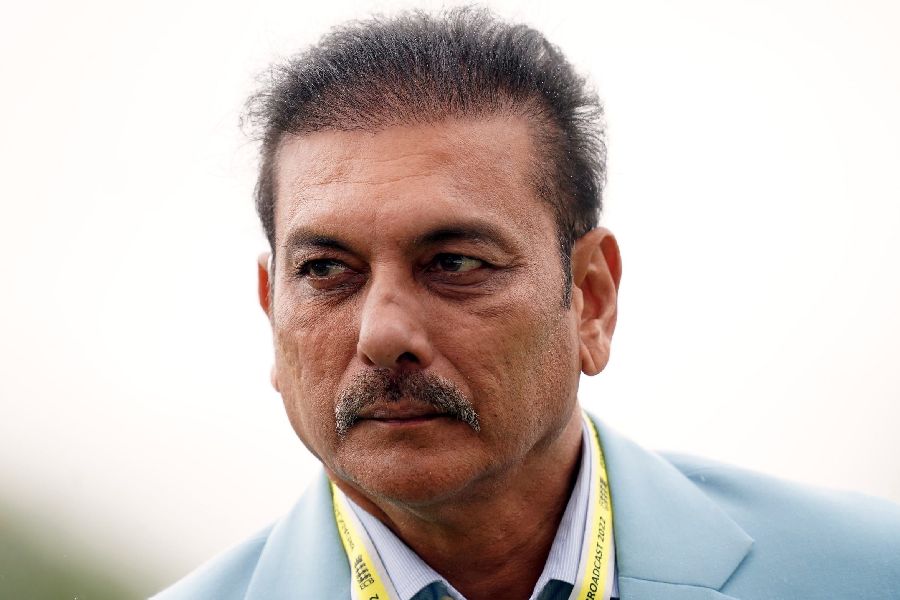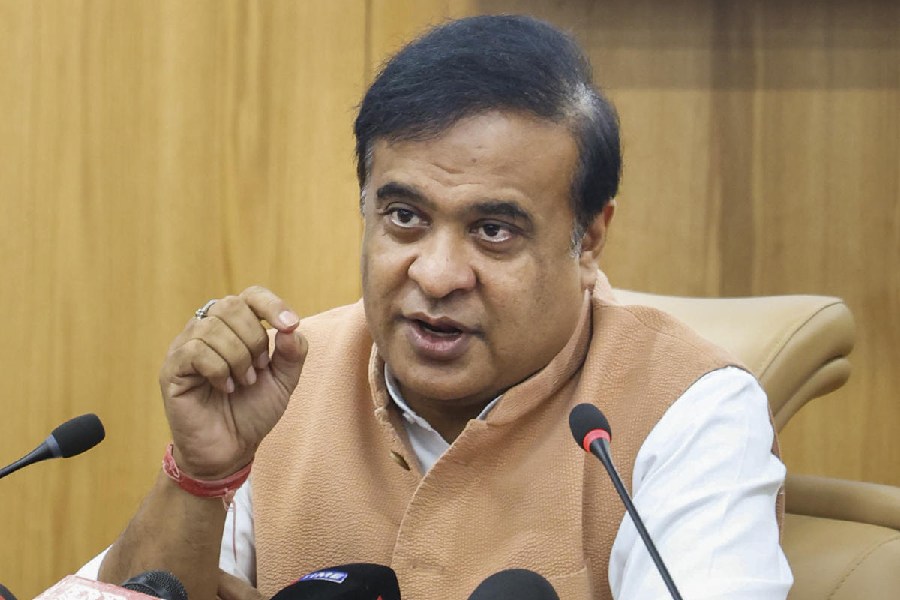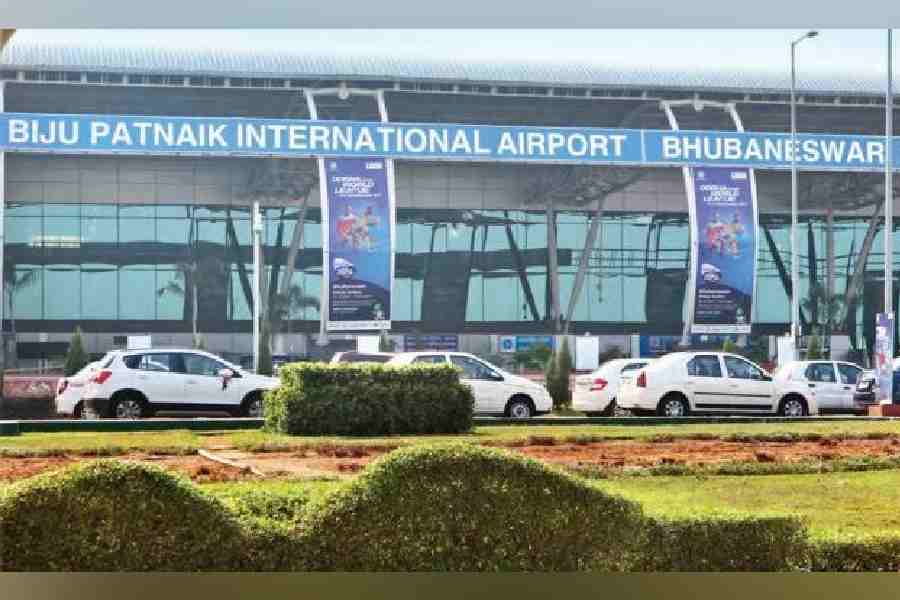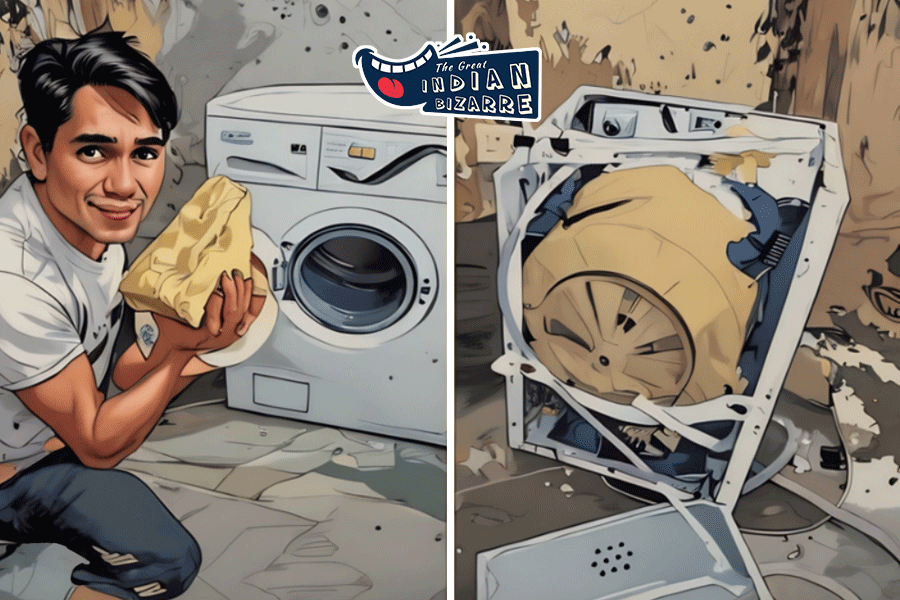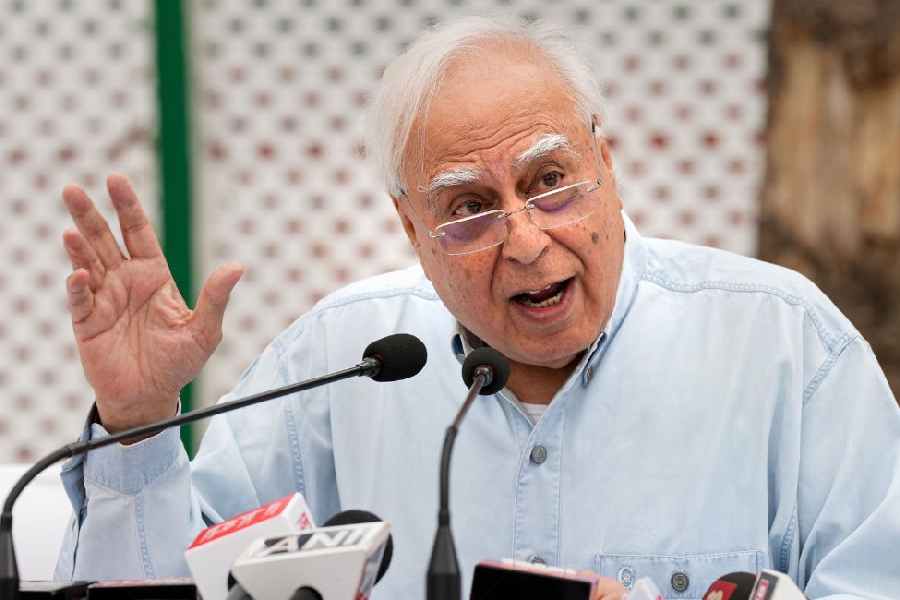 |
| Dr BK Mallick in his chamber. Picture by Prem Singh |
B.K. Mallick sees himself as “a needle in a haystack”. Not because it’s hard to locate him, though.
He’s always there for his patients — if not in his 11ft by 15ft chamber where he spends 12 hours a day with a two-hour lunch break, then surely at his rented two-room home 200 yards away.
What the haystack-needle comparison is meant to illustrate is the impossibility of finding anyone else like this 48-year-old physician in his stretch of the Jat heartland in western Uttar Pradesh.
Dr Mallick, MBBS, believes he is the lone Bengali for miles around and it isn’t difficult to believe him. Which other fish eater would turn vegetarian to tend to the sick in an alien land for whatever they can pay him?
It nearly didn’t happen for this Nadia native, either, but his heart melted when tough-looking, moustachioed Jats fell at his feet during a holiday trip 15 summers ago, begging him to stay because there was no doctor within six miles.
It was lucky for Katha, 6km from Baghpat town, that he did. Today, their physician is the only man in a bitterly divided settlement of 450 households who speaks to Jats, Muslims and Dalits alike.
Like its neighbouring villages, Katha was a picture of peace and unity till riots broke out in Muzaffarnagar and Shamli districts 60km away last September and ripped the region’s social fabric. Although the violence didn’t touch Katha, the polarisation it wrought did.
“The riots divided the Jats and the Muslims. It’s so sad to see so much hatred among the villagers for each other,” Mallick rued.
“There was so much love and affection once but it disappeared overnight. Now they don’t speak to one another.”
Mallick does his bit by trying to heal the psychological wounds with the balm of goodwill and common sense.
“People from both communities come to me for treatment, and I ask them not to become playthings in the hands of politicians. I hope things will become better after the elections,” he said.
It’s easy to see the immense love and respect the villagers, Hindu and Muslim, have for their “Bangali Doctor Saheb”. Even the glass pane at his chamber has “Bangali” written in block letters under the doctor’s name.
“He’s our God. He left his own village in Bengal and settled down here to take care of us,” said prosperous Jat farmer Neeraj Kumar reverentially.
“Doctor Saheb is a godsend for us,” agreed day labourer Mohammed Shakir. “He’s always there for us, day and night.”
‘Strange’ land
Mallick says he graduated from one of Calcutta’s medical colleges and began practising in Fatehpuri Gram, his native village about 100km from Nadia town. A decade and a half ago, he paid a visit to a friend “who was from Calcutta and was practising in Meerut”.
“My friend knew some villagers in Katha, 36km away, and asked if I’d like to practise there since there were no doctors around. But I refused straightaway. How could I have lived in a strange land which is culturally so different?” he recounted.
But when his friend, Dr Partho Ghosh, requested Mallick to accompany him to the village just to get a feel of the place, he agreed.
“Some of the villagers fell at my feet and begged me to stay back, and I was deeply moved. They told me they had to walk 6km to the nearest government health centre in Baghpat, which was short of infrastructure,” Mallick said.
One of the villagers provided him with a small room to open a chamber and start a practice.
Eight years later, Mallick married Doli, a resident of Kamla Kashipur village in North 24-Parganas. The couple have a five-year-old son, Amartya, who catches a school bus every day to go to an English-medium institution in Baghpat.
“It was a huge culture shock for my wife. She had great difficulty settling down,” the doctor said. Doli found the language incomprehensible; she couldn’t eat the food.
“People don’t eat fish or meat in the village; so we have had to learn to live on vegetables. You can imagine how miserable life can be for a Bengali without fish,” Mallick said.
But he has no regrets. “The people here love us and are always ready to help,” said the doctor who now speaks fluent Hindi.
Katha’s 280 Jat families are well-to-do sugarcane farmers while the 100 Muslim households and 70 Dalit families make up the workforce in the fields.
The older Jats are still behind the Rashtriya Lok Dal’s Baghpat candidate, Ajit Singh, son of former Prime Minister Chaudhary Charan Singh. Many among the younger generation, though, are believed to have voted for the BJP for the first time. Former Mumbai police commissioner and BJP candidate Satyapal Singh is a Jat.
The Muslims were divided between the Samajwadi Party and the Bahujan Samaj Party while the Dalits were solidly behind Mayawati.
Mallick too voted on April 10. “Katha is my home now,” said the doctor who visits his Nadia village twice a year to meet his two brothers, one of whom works in a private company while the other grows crops on the two bighas the family owns.
Two years ago, the physician bought a plot in Katha to build his own house. “We have blended in completely,” he said.
He has one fatherly concern, though. “It seems my son will become a Jat. He has already started talking like them although we speak to him in Bengali at home,” Mallick rued.


